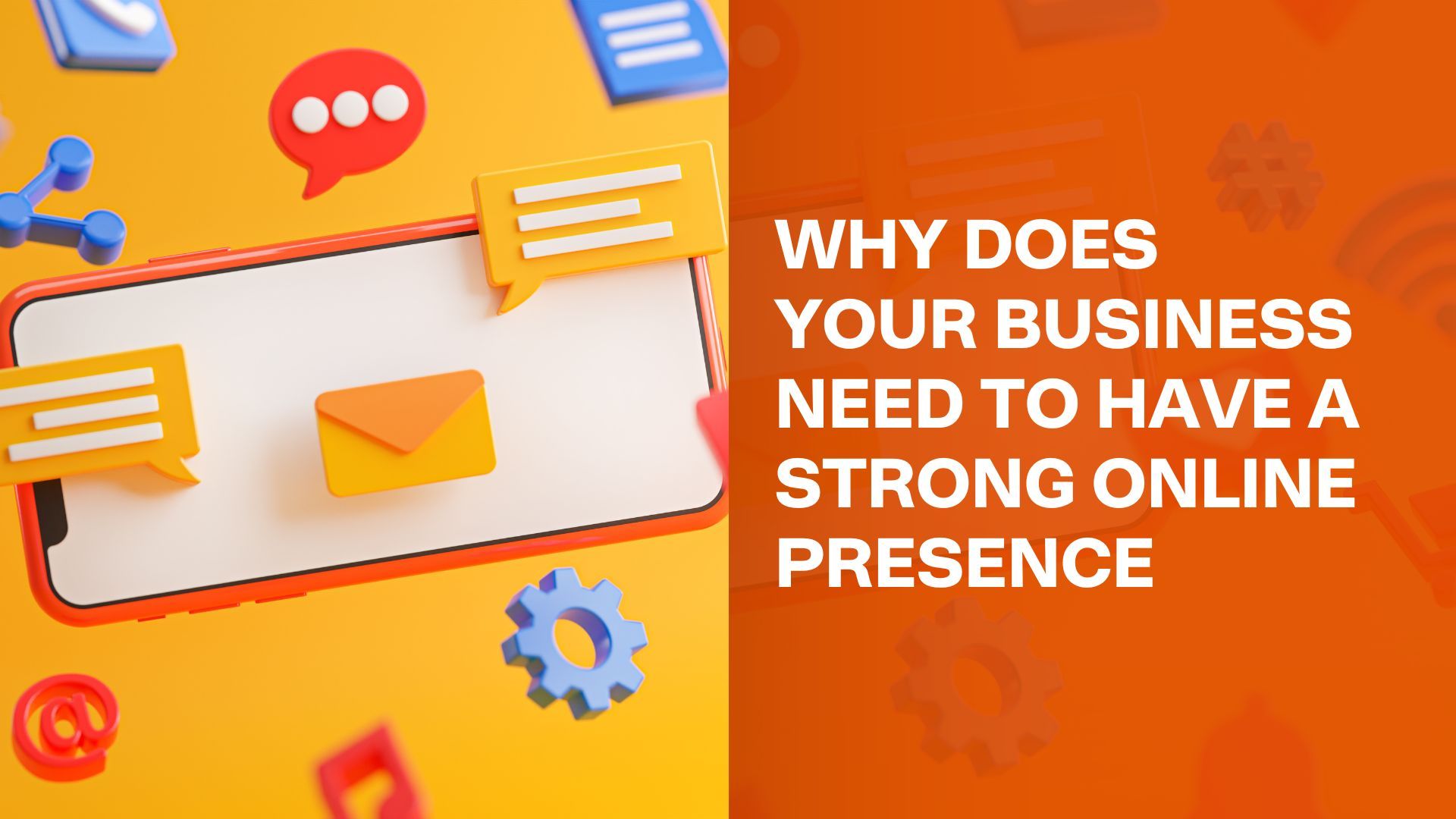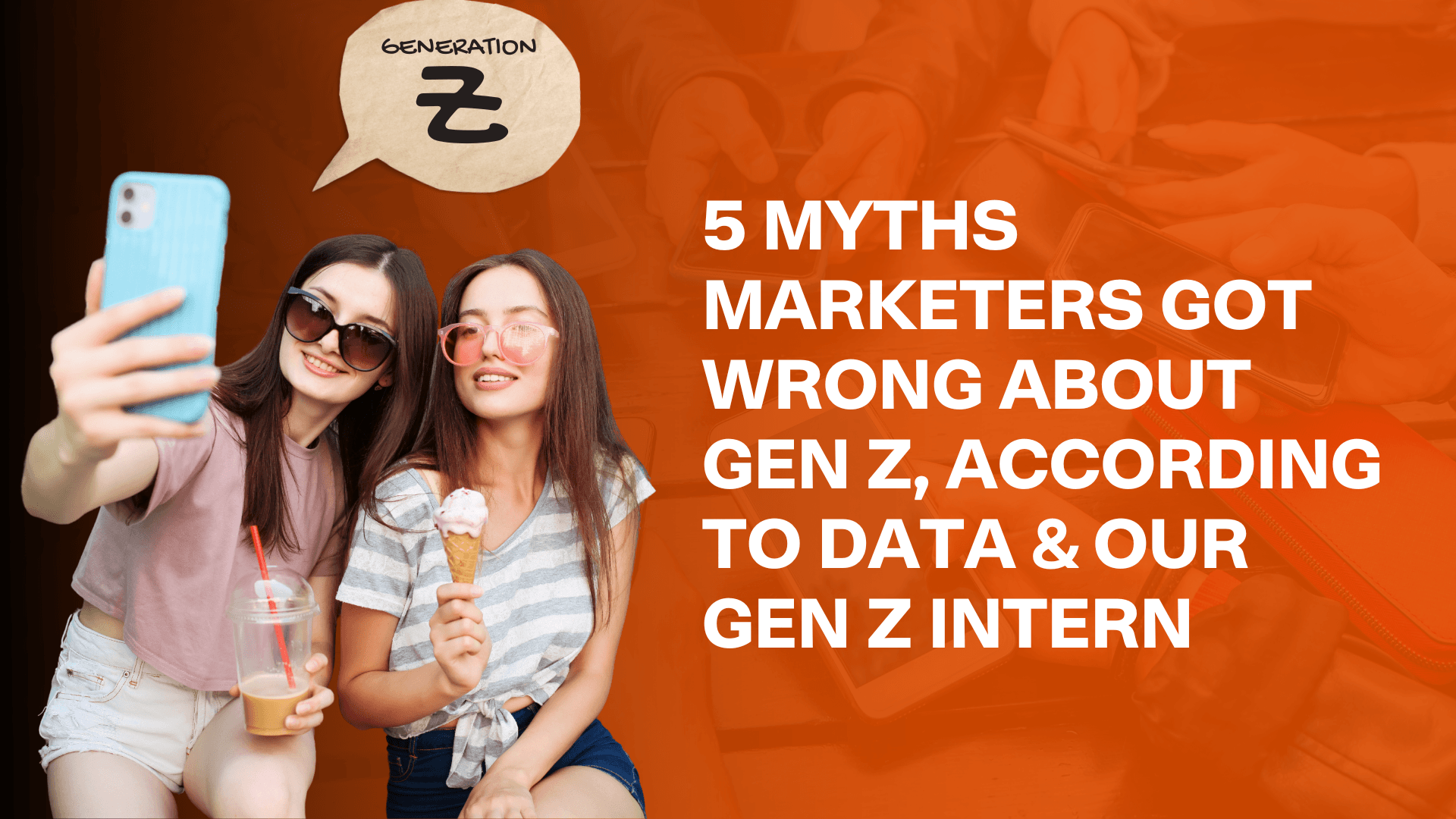DIGITAL AGENCY BLOG
Insights from our experts
Get The Most Out Of Your Knobin Website

As digital marketing continues to evolve, Artificial Intelligence (AI) is becoming a vital tool for many digital marketers. AI tools are revolutionizing the way digital marketers analyse data, automate processes, and optimize campaigns, making it easier for them to achieve better results. In this article, we will explore the top 5 AI tools that digital marketers can use to enhance their strategies and drive better business outcomes. The world of digital marketing is highly competitive and constantly evolving. Digital marketers need to be agile, innovative, and data-driven to succeed in this landscape. AI tools are making it easier for digital marketers to achieve their goals by automating tasks, analysing data, and providing insights into customer behaviour. In this article, we will discuss the top 5 AI tools that can help digital marketers improve their campaigns and achieve better results.

As a business owner, you know how important marketing is for the success of your business. But with so many different marketing strategies and tactics out there, it can be overwhelming to know where to start. This is where a marketing agency comes in. In this article, we will discuss 5 reasons why you should hire a marketing agency for your business, and how Knobin Digital can help you achieve your marketing goals. Expertise and Experience One of the main reasons to hire a marketing agency is for their expertise and experience. Marketing agencies have a team of professionals who specialize in different areas of marketing, such as SEO, PPC, social media, and content marketing. They are up-to-date with the latest trends and best practices in the industry, and can provide you with valuable insights and strategies to help your business succeed. At Knobin Digital, our team of experts has years of experience in the digital marketing industry. We have helped businesses of all sizes achieve their marketing goals, and we can do the same for you. From creating a comprehensive marketing strategy to implementing it effectively, we have the knowledge and skills to help your business grow. Time and Cost Savings Marketing can be time-consuming and costly, especially if you don't have the right expertise or resources. By hiring a marketing agency, you can save both time and money. You won't have to spend time researching and implementing marketing strategies on your own, and you won't have to hire and train a marketing team. At Knobin Digital, we offer affordable marketing services that can fit any budget. We work with you to develop a customized marketing strategy that meets your business goals and budget. Our team is dedicated to maximizing your ROI and helping you get the most out of your marketing budget. Focus on Your Business As a business owner, your time and energy should be focused on running and growing your business. By outsourcing your marketing to a marketing agency, you can free up your time and focus on what you do best. This can lead to increased productivity, better customer service, and ultimately, more revenue. At Knobin Digital, we understand the importance of focusing on your business. That's why we handle all aspects of your marketing, from strategy to execution. We work behind the scenes to ensure that your marketing is running smoothly, so you can focus on what really matters - your business. Access to the Latest Tools and Technologies Marketing is constantly evolving, and it can be difficult to keep up with the latest tools and technologies. By hiring a marketing agency, you can take advantage of their access to the latest tools and technologies. This can give you a competitive advantage and help you stay ahead of the curve. At Knobin Digital, we use the latest tools and technologies to ensure that your marketing is effective and efficient. We are constantly updating our knowledge and skills to ensure that we are providing you with the best possible service. Measurable Results One of the biggest advantages of hiring a marketing agency is the ability to measure your results. A good marketing agency will provide you with regular reports and analytics that show how your marketing is performing. This can help you make informed decisions about your marketing strategy and adjust your tactics as needed. At Knobin Digital, we believe in transparency and accountability. We provide our clients with regular reports and analytics that show how their marketing is performing. We work with you to set measurable goals and track your progress, so you can see the results of your marketing efforts.

In today's digital age, having a strong online presence is essential for any business that wants to succeed. A strong online presence refers to a business's ability to effectively connect with its target audience through various digital channels, including websites, social media, and search engines. In this blog, we will explore the importance of having a strong online presence for businesses, and why it should be a top priority for companies of all sizes. Reach a Wider Audience One of the primary benefits of having a strong online presence is the ability to reach a much wider audience. The internet provides businesses with a global platform to promote their products and services, allowing them to reach customers anywhere in the world. This is especially important for small businesses that may not have the resources to reach a large, geographically dispersed audience through traditional advertising methods. By having a strong online presence, businesses can reach a larger number of potential customers and increase their customer base. Establish Credibility and Trust A strong online presence can also help businesses establish credibility and trust with their target audience. With the rise of online scams and fraudulent activities, consumers are becoming increasingly wary of who they do business with. A professional and well-designed website, coupled with positive reviews and testimonials from satisfied customers, can help establish trust and credibility with potential customers. This is essential for building long-lasting relationships with customers and attracting new business. Increased Visibility and Accessibility Having a strong online presence can also increase a business's visibility and accessibility. This is especially true for search engines, such as Google and Bing, which are used by millions of people every day to find information and products. By optimizing a website for search engines, businesses can improve their chances of appearing at the top of search results, increasing their visibility and making it easier for potential customers to find them. Cost-Effective Marketing Having a strong online presence can also provide a cost-effective way for businesses to reach their target audience. Traditional advertising methods, such as print ads, billboards, and television commercials, can be expensive and often not very effective. Digital marketing, on the other hand, provides businesses with the ability to reach their target audience at a fraction of the cost of traditional advertising. This makes it an ideal solution for small businesses that may not have a large marketing budget. Better Customer Engagement A strong online presence can also help businesses improve customer engagement and build better relationships with their target audience. By using social media and other digital channels, businesses can interact with their customers in real-time, responding to their questions, concerns, and feedback. This can help build trust and credibility with customers and keep them engaged with the business. Competitive Advantage Finally, having a strong online presence can give businesses a competitive advantage in their industry. By having a professional and well-designed website, businesses can stand out from their competitors and provide their target audience with a positive and memorable experience. This can help businesses attract new customers and retain existing ones, giving them a competitive edge in their industry. In conclusion, having a strong online presence is essential for any business that wants to succeed in today's digital age. From reaching a wider audience to establishing credibility and trust, a strong online presence can provide businesses with numerous benefits and help them achieve their marketing goals. By making it a top priority, businesses can stay ahead of the competition and achieve success in their industry. At KnobIn Digital , we understand the importance of having a strong online presence for businesses. Our team of experts provides comprehensive digital marketing services, including search engine optimization (SEO), social media marketing, and website design. We work with businesses of all sizes to help them establish a strong online presence, reach their target audience, and achieve their marketing goals. If you're looking to enhance your online presence, visit KnobIn.com today to learn more about our services and how we can help you succeed.

Blogging can drive a lot of traffic to your website, but it takes effort to make a blog post that gives you the best return. To maximize your blogging efforts, it's important to invest your time and energy wisely. In this article, we outlined 5 tools that boost your blogging results, driving more traffic and sales.

We are aware of the typical yet valuable advice professionals provide us regarding how beneficial it is to talk to someone anytime you are feeling down. However, some of us are afraid of being judged or stigmatized, especially when it comes to talking about certain things with certain individuals, like family.

From cryptic TikTok messages to billboards placed all around the world, here's how the country singer-turned-pop sensation kept her fans interested in the months leading up to the release of her tenth album. Brands and marketers have so much to learn from Taylor Swift. The 11-time Grammy winner just released her 10th studio album, Midnights, which set new marks on Spotify and Billboard. This is how she, her PR team, and her record label catapulted to stardom. 13 Sleepless Nights To A 13-Track Album The singer-songwriter launched a string of very great marketing strategies when she said on Instagram in late August that her next album, Midnights, was "the story of 13 sleepless nights spread throughout [her] life." On October 21 at exactly midnight on Republic Records, a division of Universal Music Group, the 13-track album had its official debut. Swift later broke the record for the most streamed artist in a single day on Spotify, and the album went on to become the service's most-streamed album in a single day. (According to Spotify data, Swift previously held the record for the most streamed album by a female artist in a day with her 2020 album Folklore.) Swift's most recent release, Red (Taylor's Version), smashed the record. By October 31, Swift had achieved yet another milestone: she was the first performer to ever hold all ten of the top positions on the Billboard Hot 100 list.

The truth is that the internet has fundamentally altered how consumers purchase goods, which, if you apply the reasoning, also substantially changes how we sell. If you're anything like us, you've probably heard the phrase "social selling" more and more frequently. We listen to it at conferences, billboards, Twitter, team meetings, and LinkedIn groups. This idea of social selling has evolved into a new paradigm for how firms think about developing relationships as social experiences like Twitter and Facebook become central to the web. It's a technique that places our company's guiding principle—that content is money—at its core. In other words, high-quality material offers more than just a fun read. Relationships, business, and innovation are all steered by content. What exactly is social selling, however? The concept of social selling is to educate potential consumers, develop relationships with them, and aid them in making decisions about what to buy. This content is typically found online. So how it works? Usually, sales representatives create identities on different social media channels and disseminate pertinent information using social media platforms like LinkedIn, Twitter, YouTube, and others. Prospective clients may occasionally receive fascinating, relevant stuff through email. These trends—sales enablement, employee advocacy, personal branding, social media marketing, content marketing, inbound marketing, and others—overlap in some way. For instance, a salesperson for a company specializing in content marketing might post content on their LinkedIn profile explaining the value of quality content. Another option is for a digital marketing company to publish information on the new ad formats that are emerging as well as the decrease of older ones. In other words, social selling is a means of generating income through content. Following are the 3 special tips to improve your social media selling approach. 1. Conduct research The success of HubSpot is based on the idea that internet users are getting quite adept at conducting research. Most of the time, if someone has a problem they're trying to address, they'll have a solid concept of how to look for a solution. Because of this, there is a considerable likelihood that a prospect who visits your website and approaches you via email, phone, or lead form is a good fit for you. Customers are not the only ones who can conduct research with ease. As salespeople, we have the same access to information about our prospects as they do to what we offer. You'll need a solid understanding of your customer's wants and how to meet those demands to succeed. What a fantastic man you are, and whether you're going to take them out to a nice lunch are no longer relevant topics. Instead, the question is whether you can genuinely provide them with the best option. Utilize the resources at your disposal, such as Facebook and LinkedIn . And develop your understanding as much as you can about potential prospects. Visit their website to learn more about the company if you're selling to them. Give it more than a cursory glance. Please take a close look at their operation to grasp its details completely. 2. Always Pay Attention One of my favorite movies is Glengarry Glen Ross , but those days of success with an unhindered focus on "A.B.C." are long gone (Always Be Closing). Not your product's brilliant positioning statement, but the questions you ask to gain a clear understanding of what your prospect needed to succeed in 2011 can make or break your sales. I instruct my team to follow "A.B.L." rather than "A.B.C." (Always Be Listening). Without fancy closing techniques, the close will become evident for you and your prospect if you ask the appropriate questions and pay close attention. You ought to be enquiring about the outlook at least as frequently. Consider the value you are adding to the transaction. What does the prospect hope to accomplish? How can you facilitate their travel there? Tell them openly if you are unable to assist them. It would This will build your credibility with them. 3. Maintain Your Image It was difficult for your reputation to spread ten years ago. With the advent of social media platforms like LinkedIn, Twitter, Facebook, and others, word will get out quickly if you communicate negatively with a prospect. A sale is no longer just about the closing, as I mentioned in the preceding sentence. The transaction is still in progress long after the potential customer signs on the dotted line. In fact, for most relationships, sales continue to be made. Making sure your consumers are satisfied will encourage them to return while also assisting you in bringing in new clients. Although it takes work to establish and maintain a stellar reputation, the rewards are well worth the effort. The way consumers buy will alter due to numerous technological advancements, which will also impact how we need to market. The most crucial thing to remember is that selling is both an art and a science, and if you don't strike the right balance between the two, you won't be successful. What impact has technology had on your marketing approach? Conclusion Regardless of the message, you are trying to convey; I believe everyone can benefit from this approach somehow. Soon, the outcomes will start to speak for themselves. All of your social media platforms will see an increase in engagement. People will gladly move back and forth from your Facebook page to your Instagram Stories. The cost of acquiring new leads will decrease, and moving them from one end of your sales funnel to the other will be more straightforward than ever. Getting more leads will eventually bring more deals. That might very well be the most significant benefit of all. If you are looking for a professional firm to outsource your digital marketing then pls contact Knobin Digital , A Sydney-based organisation with an aim to help other companies in building their digital outlook.

Classy Cats is a non-fungible token project created through the Ethereum Blockchain, and prides itself on being "the classiest cats collection on the blockchain." The Ethereum blockchain hosts 9,999 artificially manufactured NFTs as part of the project. A total of 9,999 cats make up the first generation. How uncommon or common a ClassyCat is can be determined by anything of its approximately 800 unique traits. But what’s the story and inspiration and who are the people behind it?

Gen Z can, in all honesty, feel like an alien culture. Even me, a 2001 baby. People can tell you it's pretty evident when marketers try too hard to sell to our generation; it frequently comes off as forced and false. The following are the common myths about Gen Z regarding marketing. Five Gen Z myths busted Fast fashion is a Gen Z obsession. It's simple to assume that SHEIN or Princess Polly represents our generation hauls on TikTok or Instagram. Of course, these online merchants do have some influence over our generation. Still, the retail resale websites are what catches our eye. Depop's user base, for instance, has 90% of users under the age of 26. Since resale clothing is used, Gen Zers are now buying this stuff in a much less destructive way. More than any other generation, Gen Z thinks about a brand's ethics and its position on social issues rather than getting sucked by offers and low pricing. You don't only have to believe what I say. We polled more than 100 members of Generation Z. We discovered that how a brand handles social responsibility significantly influences Gen Z consumers' purchasing decisions. Additionally, 50% of Gen Z respondents asked if businesses should take a stand on social problems agreed. This calls for marketers to give Gen Z and even younger millennial audiences top priority if they haven't already. I implore you not to view social concerns as an all-encompassing word frequently bandied about without any supporting evidence. Instead, divide it into more minor, manageable problems you can combat and win. Here's where to start to give you a little additional assistance: Racial justice was by far the most significant issue for Gen Zers. They want businesses to take a stand (69%), followed by LGBTQ+ rights (50%), gender inequity (46%), and climate change (42%). "Data security and privacy are irrelevant to Generation Z." I can see why so many people hold this opinion. Due to Gen Z's reputation for being addicted to their phones, there is a risk of unregulated and insecure data. We also belong to the TikTok generation. As many of us know, TikTok has not been without its share of privacy issues. Don't underestimate us, even though we occasionally display irresponsibility, particularly on social media (the milk crate challenge wasn't the fairest idea). We believe we were the first generation born into a technology era. We have seen more of its realities than any previous generation; data security and safety are naturally top of mind. Trustworthiness of a corporation with their data is the second most crucial factor before purchase, as seen in the graph above, and has a significant impact on Gen Z's decision-making. According to the information above, marketers must educate our generation about data privacy. They cannot presume that we are unconcerned with these issues. Ensure that we are not being taken advantage of or deceived. Don't think you can do anything with our data; we won't care. We might not always value it over experience and entertainment (as evidenced by our use of TikTok). Still, we won't mind if you do. "TikTok is The Best Way to Reach Gen Z." TikTok is a terrific platform for Gen Z since it gives it's content a genuine sense that no other app can. This style is incredibly appealing for those with shorter attention spans and busy schedules. In actuality, Gen Z utilizes TikTok the most frequently. Despite this, it's not our preferred social media site—surprisingly, perhaps. From the marketer's standpoint, TikTok Contents require more effort to produce. Here, One should not forget the all-time reliable old buddy Instagram - even for Gen Z. For various reasons, Gen Z avoids making direct purchases on TikTok. These include the above-noted concern for data privacy and the desire to only utilize that area for communication and pleasure rather than for marketing and acquisitions. As a result, Instagram should be your first choice for direct selling through social media. Because Analytics say 28% of Gen Z reported making an immediate purchase using a social media app in the last three months). "Gen Z will purchase a product if you put it in front of them." Even though we favor TikTok-style content, we are not necessarily open to all kinds of short-form films, including those that promote goods. We need to be given the impression that we discovered the product on our own before purchasing social media. We don't want to feel pressured into making a choice, primarily if it's prompted by a blatant commercial that doesn't speak to us. To influence Gen Z, The Brands must prioritize creating engaging content. Once they've piqued our curiosity, they can insert their product more efficiently rather than risk receiving another raised eyebrow from us. Word of mouth is a fantastic approach to connecting with Generation Z. Yes, I know this may sound contradictory, given how much we enjoy conversing but bear with me. Gen Z is stressed, as was just mentioned. We feel powerless, condemned, and like the world's weight is on our shoulders. That brings about a unique sense of unity and connection among us. Gen Zers trust one another as a result since they are experiencing similar shared sentiments. And what better means of rapprochement than social media? Online forums and social media have become our modern-day word-of-mouth. While targeting younger customers may need some finesse, "cool" brands on social media aren't the only ones to pull it off. Have you added graphic material? More truthfulness? More back-and-forth exchanges with clients? Hey, we think all of those sound good. Brands have the opportunity to forge meaningful connections that are advantageous to all parties. And to get sales, it's worth understanding Gen Z's tastes and what sets them apart from previous generations.
Get in touch with us
1300 952 852
Have Questions?
info@knobin.com
Subscribe to our Newsletter


